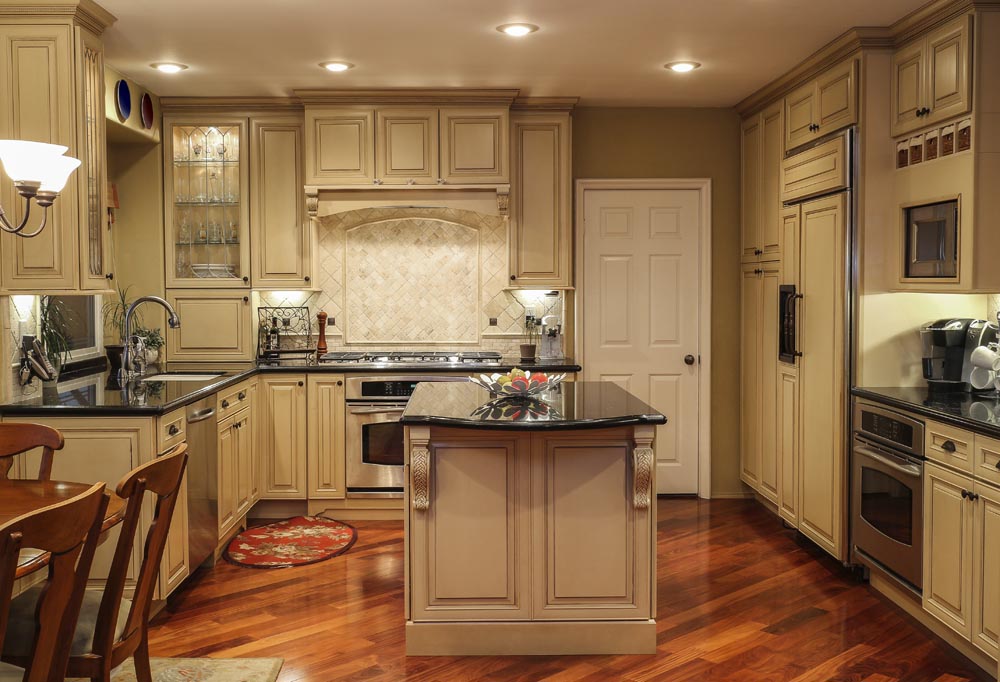Table of Contents
- Bold Veining and Natural Patterns
- Sustainable and Eco-Friendly Materials
- Textured Finishes
- Integrated Countertops and Backsplashes
- Dark and Moody Tones
- Metallic Finishes
- Terrazzo Countertops
- Waterfall Edges and Thick Profiles
Kitchen countertops are no longer just practical surfaces—they’ve become integral to a kitchen’s style and atmosphere. In 2025, homeowners and designers alike are exploring inventive materials and patterns, making countertops a strong design statement. For those renovating or planning a kitchen update, understanding the latest trends in quartz countertops St. Louis, as well as other innovative materials, can help you achieve a look that is both contemporary and timeless.
Countertops now serve as focal points, adding texture, color, and personality to kitchens of all styles. New trends include bold veining, eco-friendly materials, and unique finishes. The right countertop can enhance both the look and function of your kitchen, making it a welcoming centerpiece. Choosing the right one involves balancing visual appeal, durability, and maintenance. Materials like quartz, granite, and recycled glass each have strengths, instantly updating your kitchen’s ambiance. Staying current with countertop trends helps your space reflect your personality and values, whether prioritizing sustainability or bold design.
Bold Veining and Natural Patterns
Eye-catching veining is currently a standout style choice for countertops. Materials like marble and quartzite, with pronounced organic patterns, are especially popular for kitchen islands and focal areas, transforming practical surfaces into pieces of art. Dramatic veining creates a sense of movement, and natural variation means every installation is truly unique. This inclination towards organic aesthetics is part of a larger trend toward biophilic design, which incorporates natural elements inside.
Sustainable and Eco-Friendly Materials
Environmental consciousness has significantly influenced kitchen design. Homeowners are increasingly considering materials like recycled glass, bamboo, and reclaimed wood for their countertops. Recycled glass countertops, in particular, have surged in popularity, lending kitchens vibrant, speckled colorways while reducing landfill waste. Bamboo is another renewable option recognized for its strength and warmth. These choices not only curb environmental impact but also introduce distinctive textures and colors to the kitchen, fostering a modern yet responsible aesthetic. Reclaimed wood, featuring original marks and patina, brings a sense of history and character that new materials cannot replicate.
Textured Finishes
Glossy countertops remain a classic, but matte, honed, and leathered finishes have gained traction for their tactile appeal and practicality. These finishes add depth and soften reflections, making fingerprints and smudges less noticeable. Leathered granite and honed quartzite deliver a muted luxury, encouraging touch and interaction—an ideal combination for busy kitchens. Textured finishes also work well in open-concept designs, subtly delineating kitchen zones without overpowering other decor choices.
Integrated Countertops and Backsplashes
For a streamlined, contemporary look, integrated countertops and backsplashes are a leading trend. By extending the countertop material up the wall, designers maximize visual continuity, eliminate grout lines, and simplify cleaning. This cohesive design trick works with both natural stones and engineered materials, resulting in kitchens that feel modern, spacious, and sophisticated. It’s an excellent way to allow a statement slab to remain the focal point without competition from contrasting tiles or additional materials.
Dark and Moody Tones
While bright, airy kitchens remain in style, there’s an increasing appetite for bold, dark countertops. Deep charcoal, black, dark green, or navy hues introduce drama and contrast—especially striking against white cabinetry or brass accents. These deeper shades evoke luxury and depth, creating a cozy, inviting environment that remains distinctly modern. Pairing dark countertops with light walls and open shelving can help keep the space balanced and approachable, according to leading designers featured in Homes & Gardens.
Metallic Finishes
Stainless steel has long been favored in commercial kitchens, but now, residential kitchens are adopting the richness and durability of metals like steel, zinc, and copper. These materials are resilient, heat-resistant, and naturally develop unique patinas over time, contributing character and depth. Metallic countertops introduce an industrial edge or warm sophistication, depending on the finish, and they complement modern and traditional cabinetry equally well.
Terrazzo Countertops
Terrazzo—known for its playful, speckled surface—is enjoying a resurgence. This versatile material combines chips of marble, quartz, glass, or granite set within a resin or concrete base, resulting in vibrant and unique surfaces. Terrazzo can be customized in color and aggregate size, making it an exceptionally artistic option for kitchens aiming to stand out. It’s also known for being stain and scratch-resistant, making it a practical and visually engaging choice.
Waterfall Edges and Thick Profiles
Waterfall edges, where the countertop cascades vertically down the sides of islands and peninsulas, continue to command attention in kitchen design. These sculptural features highlight the beauty of the material and lend a luxurious, architectural quality to open-concept layouts. Thick countertop profiles, meanwhile, amplify the feeling of substance and elegance, underscoring the kitchen island as a key gathering spot.
Adopting one or more of these trends ensures your kitchen not only functions beautifully but also feels fresh and personalized. Whether you choose the drama of bold veining or the eco-friendly appeal of recycled glass, the right countertop material will define the character of your space for years to come.


